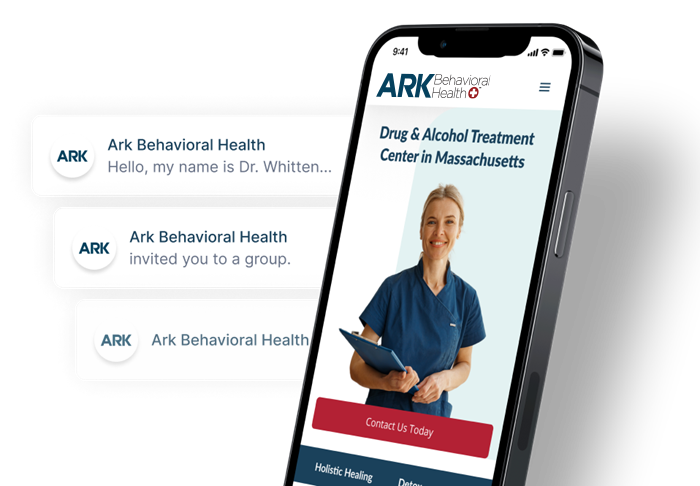Methadone Abuse & Addiction | Uses, Side Effects, & Treatment Options
- What Is Methadone Used For?
- Addiction
- Overdose Signs
- Withdrawal & Detox
- Addiction Treatment
- Methadone FAQ

Methadone is an approved medication for managing opioid use disorder, but can also become an addictive substance if misused. If you have a methadone prescription because of opioid addiction, be aware of the potential for abuse.
However, the medication can be useful in certain treatment programs, and there are a wide variety of addiction treatment options available.
What Is Methadone Used For?
Methadone was one of the first substances approved by the FDA as a way of managing opioid addiction. It helps manage withdrawal pain safely and makes it easier for a person to avoid unnecessary suffering during the rehab process.
Although sometimes used as a pain management tool for those without addiction, methadone is commonly used in medication-assisted treatment (MAT) programs.
Taken as a liquid, tablet, or dispersible dissolved in liquid by mouth, methadone is a useful care option for pain relief and opioid use disorder when the medication is prescribed along with a comprehensive treatment program.
However, methadone can be addictive and habit-forming when misused.
Can Methadone Be Used Safely?
Although the misuse of methadone can lead to addiction and overdose, there are many ways that you can safely and effectively use the medication:
- only using the proper amount prescribed
- decreasing doses as suggested by the doctor
- avoiding alcohol and other substances
- talking to your doctor if you notice addiction or overdose symptoms
These simple steps can help to make visiting a methadone clinic or being in a MAT program safe and effective. However, knowing the signs of addiction and overdose can help keep patients safe and avoid misuse.
Methadone Addiction Signs & Side Effects
Although a methadone clinic can defeat opioid addiction appropriately, addiction may also be a likely side effect. This problem is very upsetting and must be noted at all possible chances.
Many symptoms indicate an addiction to this substance, such as:
- cravings for methadone
- withdrawal symptoms when trying to stop
- trying to get methadone illegally
- using more than prescribed
- using methadone without a prescription
These symptoms may also pair with changes in behavior, intense sleepiness, difficulties with family members, job loss, and other disruptions.
Side effects of methadone addiction can be mild or severe and may include:
- stomach pain
- weight gain
- dry mouth/sore tongue
- irregular or fast heartbeat
- flushing
- extreme drowsiness
- nausea
- slow breathing
- seizures
Learn more about the Long-Term Effects Of Methadone
Methadone Overdose Signs
Methadone overdoses are possible with addiction and are a terrifying situation when they happen.
Signs and symptoms of a methadone overdose may include:
- confusion
- disorientation
- dizziness
- intense drowsiness
- pain in the stomach
- nausea
- coma or unresponsiveness
It’s imperative to get immediate help in this situation because an overdose death may occur. Naloxone, an opioid overdose reversal medication, can save you or a loved one’s life in the event of an overdose.
Methadone Withdrawal Symptoms & Detox
When quitting methadone, you could notice symptoms of withdrawal about 24-36 hours after your last dosage. The intensity of this process will vary, as does the length of your symptoms.
Some may experience withdrawal symptoms for 2-3 weeks, but others may have them for six months.
Some common methadone withdrawal symptoms include:
- extreme tiredness that can make it hard to stay awake
- anxiety and restlessness that makes it hard to focus on day-to-day tasks
- sweating and watery eyes that make you very uncomfortable in your skin
- trouble sleeping that may trigger lengthy bouts of insomnia
- muscle aches and pains
- stomach cramps, nausea, and extreme constipation
These symptoms can also include hallucinations and even heart palpitations that may be dangerous without help.
Detox programs are designed to walk you back from these symptoms and keep you safe and comfortable during withdrawal. Although detox won’t treat methadone addiction, it helps prepare you for a drug rehab program.
Methadone Addiction Treatment Options
Managing methadone addiction is a critical part of your recovery and requires many different steps. It would help if you managed both your physical and mental dependence using many programs designed to handle these needs.
A few rehab program options you can consider for methadone addiction include:
- inpatient treatment for 24/7 rehab and support
- outpatient care that allows you to go to work and school
- behavioral therapy that motivates changes
- group therapy and support groups that keep you focused on recovery
You could also attend a medication-assisted treatment program that uses other medications than methadone, which could include buprenorphine or naltrexone.
To learn more about the treatment options available to you or a loved, please contact Ark Behavioral Health today.
Methadone FAQ
Can You Inject Or Snort Methadone?
Yes, methadone can be abused through snorting or injecting, which sends the drug directly into the bloodstream. These types of abuse may produce a more intense high but are extremely dangerous.
Snorting and injecting can cause infections, respiratory problems, abscesses, overdose, addiction, and even death.
Learn more about Injecting & Snorting Methadone
Does Methadone Maintenance Cause Weight Gain?
Although methadone itself doesn’t cause weight gain, it can cause cravings for sweet foods and may cause water retention. If you work with your doctors to maintain a healthy lifestyle, including balanced nutrition and exercise, your weight should be manageable.
In early recovery, you may gain weight if you were previously underweight or malnourished.
Read Does Methadone Maintenance Cause Weight Gain? to learn more
How Long Does Methadone Stay In Your System?
Methadone can stay in your system anywhere between 8 to 2000 hours after last use. It tends to stay in the body longer than other opioids. Methadone use can be detected by different types of drug tests after a certain period of time.
Read How Long Does Methadone Stay In Your System to learn more
Is There A Methadone Pill?
Yes, there are methadone pills and tablets for the treatment of opioid dependence. The brand name methadone prescriptions Methadose and Dolophine are white and round in appearance.
Learn more about Methadone Pills
Is Methadone An Opiate?
No. An opiate is a type of opioid that’s naturally derived from the opium poppy plant. Methadone is a synthetic opioid, which is a type of opioid that’s produced in a laboratory and has no natural elements.
Is It Safe To Take Methadone During Pregnancy?
Using methadone to treat opioid addiction while pregnant is considered a much safer alternative to leaving the disease untreated.
However, methadone can increase the risk of premature birth, low birth weight, and neonatal abstinence syndrome (a treatable condition that causes a baby to experience opioid withdrawal symptoms after birth).
If you’re concerned about using methadone while pregnant, talk to your doctor.
How Long After Taking Methadone Can You Take Suboxone?
It’s possible to switch from methadone to Suboxone, but it’s a slow and difficult process. You must first taper your dose of methadone to at least thirty milligrams before you can begin Suboxone.
Once your dose is low enough, you must wait about 72 hours for withdrawal symptoms to appear. When you start experiencing withdrawal, you can begin taking Suboxone.
How Do Methadone Clinics Work?
Methadone clinics use medication-assisted treatment (MAT) to help people recover from opioid addictions.
In MAT, doctors prescribe medications like methadone, buprenorphine, and naltrexone to reduce cravings for opioids and ease withdrawal symptoms.
Most methadone clinics also offer other recovery services, such as behavioral therapy and peer support groups.
Written by Ark Behavioral Health Editorial Team
©2024 Ark National Holdings, LLC. | All Rights Reserved.
This page does not provide medical advice.
Medline Plus - Methadone
National Center for Biotechnology Information (NCBI) - Withdrawal Management
Substance Abuse and Mental Health Services Administration (SAMHSA) - Methadone

Questions About Treatment?
Ark Behavioral Health offers 100% confidential substance abuse assessment and treatment placement tailored to your individual needs. Achieve long-term recovery.
100% confidential. We respect your privacy.
Prefer Texting?
Our friendly support team is here to chat 24/7. Opt out any time.







 Learn More
Learn More








